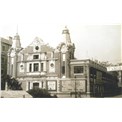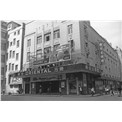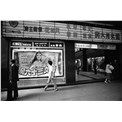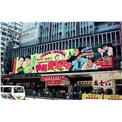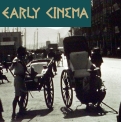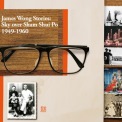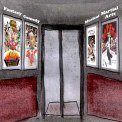 Collections
Collections Down Memory Lane: Movie Theatres of the Olden Days
Down Memory Lane: Movie Theatres of the Olden Days Movie Poster Artist
Movie Poster Artist Time of Movie Poster and its Artist
Time of Movie Poster and its Artist
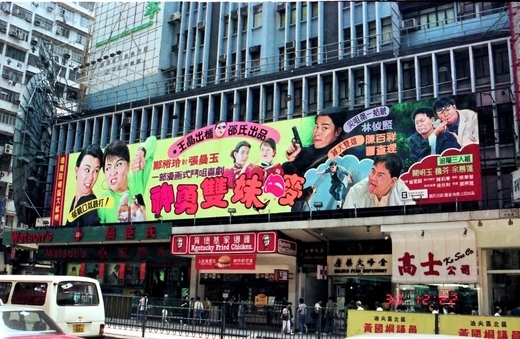
In the good old days, giant hand-drawn movie poster was once an important tool for movie theatres to provide screening information. It was usually hung on both sides of the main entrance and the exterior wall. At the beginning, only basic information such as the movie title, director’s and actors’ names, and the screening schedule were displayed, but gradually, it became more than just a mere publicity tool. Imagine a two-story high movie poster hanging outside the theatre facing a busy street, it was an eye-catching and creative work of art, telling us which movie was “Now playing” or the “Next change” and what would be “Coming soon”.
The Artist and the Theatres
An old movie theatre may be defined by its architecture but the movie poster it hung on it facade could also help make a difference. The carefully crafted movie posters of first-run theatres obviously made those of community theatres pale in comparison.
The Hong Kong film industry was at its peak during the 1950s and 1960s. Over 200 Cantonese and Mandarin films, and over 300 foreign films were distributed in a year; in other words, a new film was shown every one or two weeks. Yet, there were only about 100 movie poster artists in the market. The most highly skilled and sought-after artists were no more than 10 and their daily salary could range from a hundred to over a thousand, depending on their experience and craftsmanship. Some would even be paid triple or more by film companies or directors for special assignments. Big theatres like Astor and Oriental always had the best of the best working for them.
From Old to New
Just like many other businesses in the old times, the movie posters profession also had an apprenticeship system. The apprentice would be assigned to take care of all the ground work and it could take three to four years before he could handle a poster by himself. Most of the first generation artists were formally trained in the Mainland. Some studied overseas. The second generation was merely protégés of the old masters who then took up the torch to continue training the next generations. Sometimes they would simply replicate the original posters provided by film companies while other times they would create their own posters based on different film stills. It was a job which required both craftsmanship and creativity. Besides drawing posters, they also needed to take care of all other displays including the signage and screening schedules for the theatres.
From Dawn to Dusk
The giant movie poster outside the theatre usually consisted of 20 to 32 pieces at four feet by six feet wood panels. Before the computer age, the process of drawing and putting together the pieces was no easy task.
Usually the theatre was responsible for the advertising cost of films as well as putting up the movie posters inside and out. But when a film company asked for more, for instance, a bigger movie poster or an extra lobby display, they would have to bear the extra costs themselves. Every Tuesday around 6pm, theatre employees, regardless of their positions, would join hands to change the poster in the old fashion way. Without any safety measure, one would climb up the wall while another would hand him the wood panels. Such hard work was to be repeated every week during the heyday of our film industry.
Nonetheless, as the big theatres turned into mini theatres inside large shopping malls during the 1980s, and computer printing technology improved and became popular, hand-drawn movie posters gradually faded out. In 2000, the era of hand-drawn movie posters finally came to an end when all theatres in Hong Kong discontinued their use once and for all.
